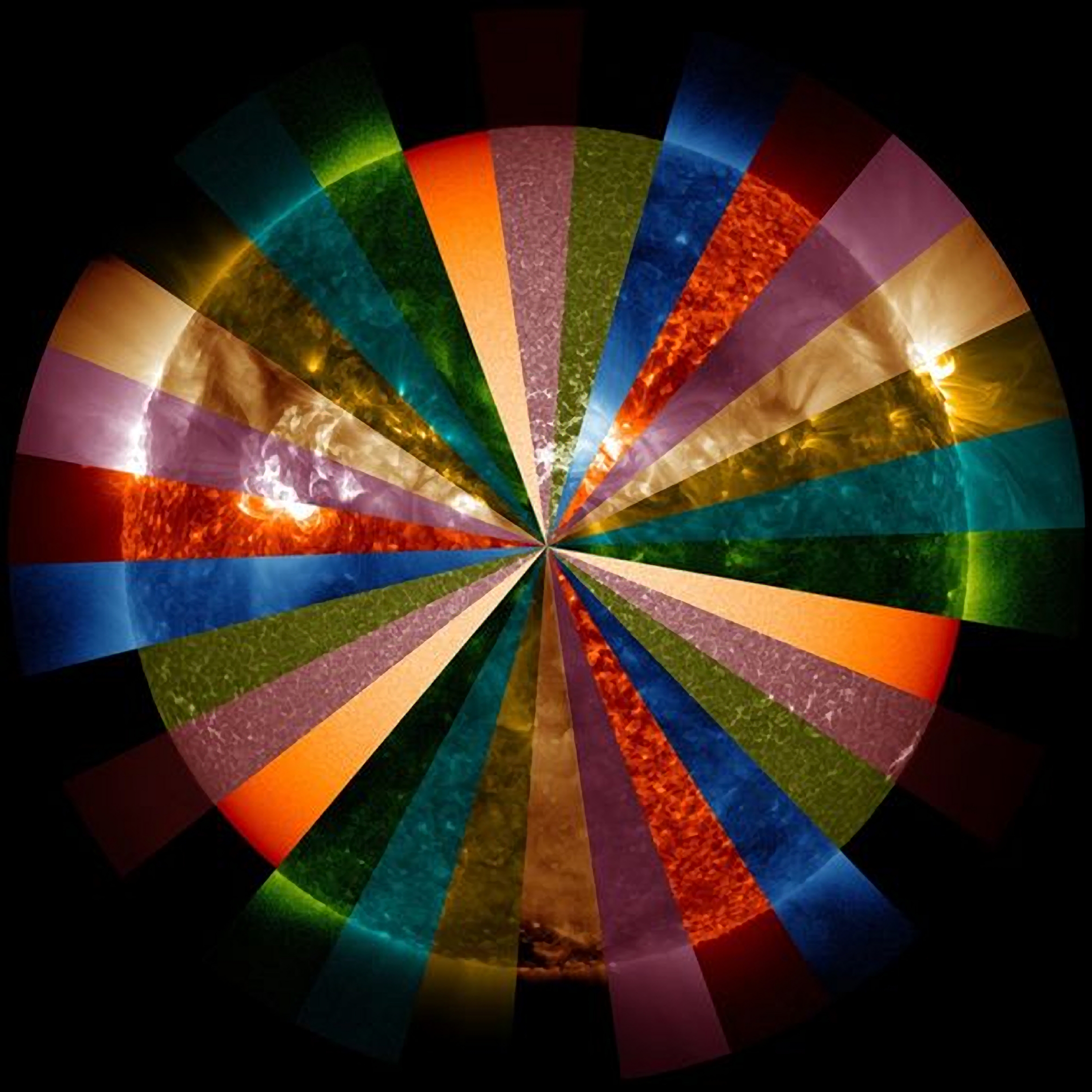Have you ever stopped to truly look at the sun? It’s a blazing orb in the sky, a source of life and energy that we take for granted. But have you ever wondered what color it truly is? You might think it’s yellow, but the sun is much more complex than that. It’s a cosmic kaleidoscope of color, and understanding the true color of our sun unlocks a deeper appreciation for the universe we inhabit.

Image: imagemart.aflo.com
The sun is a star, a giant ball of hot gas that emits light and heat. The color we perceive is a result of a complex interplay of light wavelengths. This article delves into the fascinating world of sunlight, exploring its true color, what influences our perception, and the scientific intricacies behind this celestial wonder.
Beyond a Simple Yellow
You might be surprised to learn that our sun isn’t actually yellow. While it appears that way to us on Earth, the sun is a brilliant white star. The reason we see it as yellow is due to the Earth’s atmosphere. Our atmosphere acts like a filter, scattering shorter wavelengths of light (blue and green) more effectively than longer wavelengths (red and orange). So, as sunlight passes through our atmosphere, the blue and green light gets scattered, making the sun appear yellow.
The True Spectrum of the Sun
To understand the sun’s true color, we need to look at its light spectrum. Sunlight is made up of all the colors of the rainbow, like a prism splitting white light into its constituent colors. This full spectrum of colors is called the ‘electromagnetic spectrum’, and it includes everything from radio waves to gamma rays.
When we look at the sun’s light spectrum, we find that it emits the most energy in the green-yellow region of the spectrum. This is called the “peak emission of sunlight”. However, the sun’s spectrum is not a single peak; it’s a broad distribution of energy across the entire visible spectrum.
The Sun’s Evolving Color
The sun is not a static entity. It’s a dynamic star that undergoes changes over time. As it ages, the sun is gradually becoming hotter. This change in temperature affects the spectral distribution of its light, shifting the peak emission towards shorter wavelengths. In the distant future, the sun will become a red giant, appearing redder as its peak emission shifts towards longer wavelengths.

Image: solar-center.stanford.edu
The Importance of Color in Astronomy
The color of stars is a crucial tool for astronomers. It provides information about a star’s temperature, composition, and age. By analyzing a star’s spectrum, astronomers can determine the elements present in its atmosphere, its surface temperature, and even its distance from Earth. This information is essential for understanding the evolution of stars and galaxies.
The Impact on Our Environment
The color of the sun also impacts our environment. While we experience the sun’s heat, its light spectrum is also responsible for photosynthesis, the process by which plants convert light energy into chemical energy. Different wavelengths of light are absorbed and reflected by plants differently, which influences their growth and development.
Perspectives from Experts
“The sun is a complex and fascinating celestial body,” says Dr. Sarah Jones, a renowned astrophysicist. “By studying its light spectrum, we gain a deeper understanding of its composition, its evolution, and its influence on our planet.”
Actionable Takeaways
Now that you’re privy to the secrets behind the sun’s color, you can appreciate the beauty and complexity of our solar system. The next time you look at the sun, remember that it’s a giant white star, not just a yellow orb in the sky. Take a moment to marvel at the intricate interplay of light, color, and celestial phenomena that make our universe such a fascinating place.
What Is The Color Of Our Sun
Conclusion
The true color of our sun reveals a captivating story. It’s not just a simple yellow, but a complex spectrum of light that informs us about its age, composition, and evolution. Next time the sun graces your day, take a moment to appreciate this dynamic cosmic powerhouse and its influence on our planet and our perspective of the universe.






